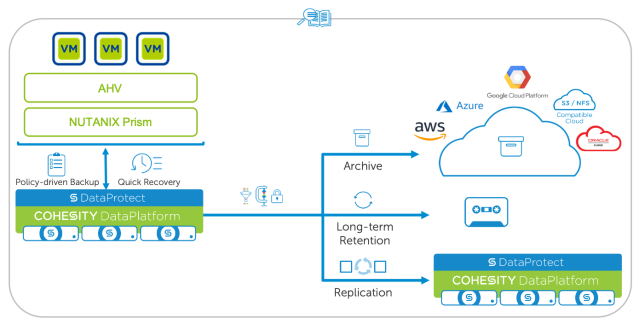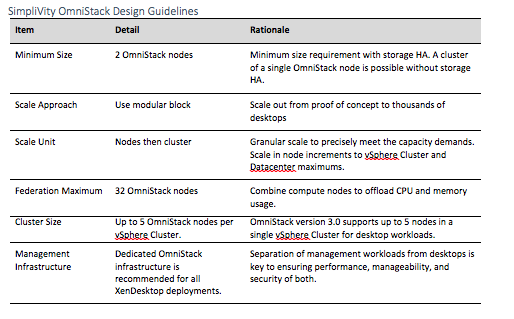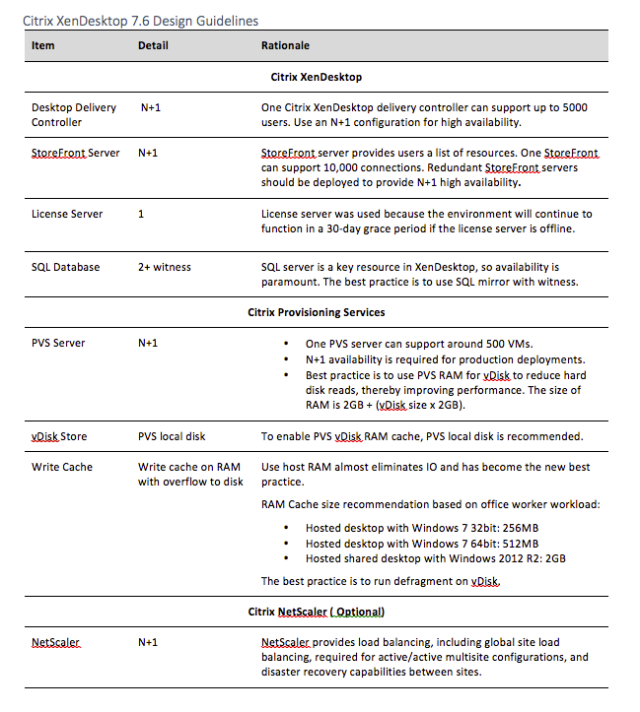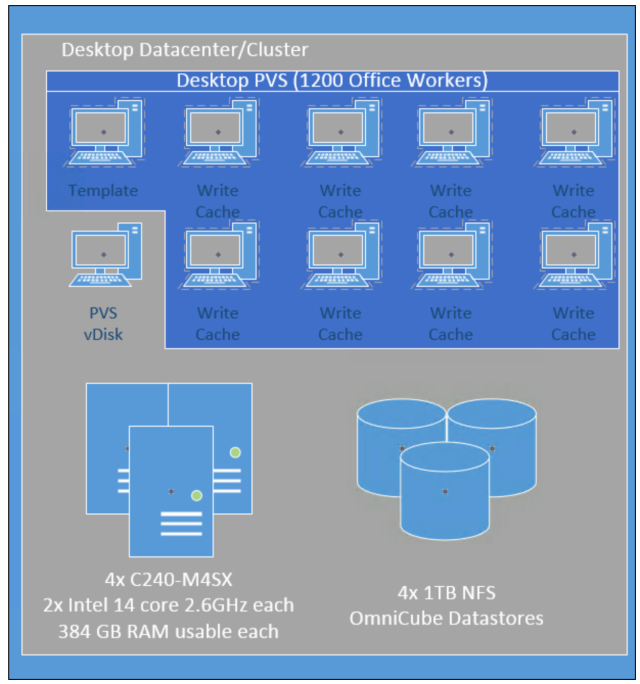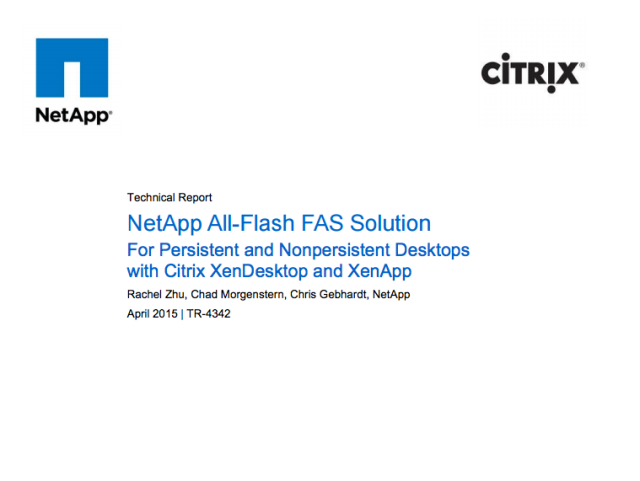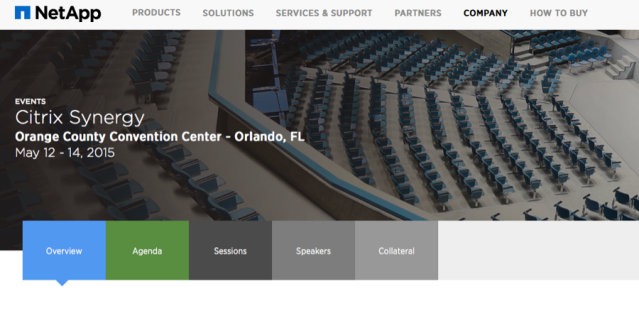Traditional data center infrastructure has many separate silos of compute, storage, networking, and virtualization resources. Procurement, deployment, and management of these separate components are time-consuming and labor-intensive. Legacy enterprise data protection and recovery typically consists of complicated and expensive products and solutions. Today, with new types of applications driving more and more digital business, modernizing and protecting your data center, extending it to the cloud, and developing for the cloud have never been more important.
The Nutanix Acropolis operating system is a hyperconverged infrastructure (HCI) platform with built-in virtualization, Acropolis Hypervisor (AHV). Nutanix AHV is native, enterprise-grade virtualization, and is included with Enterprise Cloud OS.
Bringing Cohesity DataPlatform™ together with Nutanix AHV enables you to protect the virtual machines that run on Nutanix AHV. Cohesity DataPlatform employs the Nutanix API to deliver protection using a snapshot-based, incremental-forever backup approach on a scalable, resilient platform that provides a single pane for backup, granular recovery, disaster recovery, cloud archive, and cloud tiering.
Some of the advantages of this solution include:
- An API-first architecture that eliminates the need for proxies and agents.
- A snapshot-based workflow provides a granular control.
- Incremental-forever backups capture, move, and store only changed data, reducing ingress and egress costs.
- Distributed, parallel, and workload-optimized ingest.
Cohesity DataPlatform integrates seamlessly with Nutanix AHV. You can register Nutanix Prism as a protection source. After registration, Cohesity DataPlatform auto-discovers Nutanix cluster nodes, VMs, and vDisks. Users can define Protection Policies for backup, replication, and archival that are based on business needs.
Both Cohesity and Nutanix provide hyperconverged infrastructure (HCI) that delivers simple, efficient, and cost-effective ways to keep data and applications safe. Cohesity DataPlatform is specifically designed and engineered to provide services to organizations with an entirely new and modern approach for data protection and recovery. This solution brings a snapshot-based, incremental-forever backup approach on a scalable and powerful platform for your Nutanix AHV backups.
If you are a Cohesity customer or interested in using Cohesity DataPlatform for your AHV environment, ask Cohesity sales engineers about Nutanix AHV Solution Guide.


